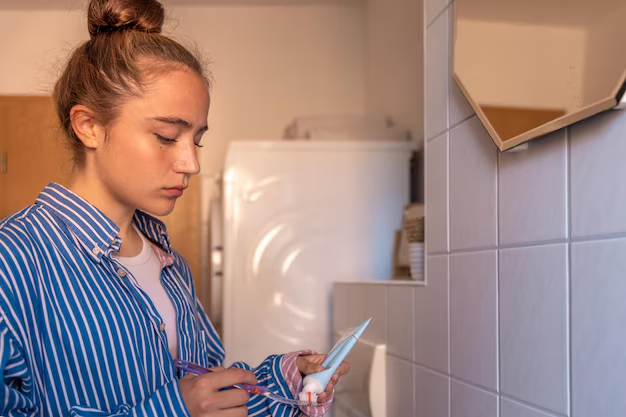Installing a Water Line to Your Refrigerator: A Step-by-Step Guide
Are you tired of lugging water bottles or constantly refilling the ice cube trays in your freezer? Installing a water line to your refrigerator can transform your kitchen experience, giving you instant access to fresh, filtered water and ice directly from your fridge. This process might seem a bit daunting, but with the right tools and instructions, it's a manageable DIY project. Here's a comprehensive guide to help you through the process, whether you're a seasoned handyman or a weekend DIY enthusiast.
🛠️ Getting Started: Know Your Path
Before you dive into the project, it’s important to understand your refrigerator and kitchen setup. Here’s what you need to consider:
Identifying the Water Source
Consider Existing Plumbing: Locate the nearest cold water supply line. This is often found under the kitchen sink or in the basement directly below the refrigerator. The closer it is, the easier your installation will be.
Plan the Path: Measure the distance from the water source to your refrigerator. This will help you determine the length of the tubing you need.
Gathering Necessary Tools and Materials
To complete the installation, you'll need a few tools and materials:
- Flexible Tubing: Available in copper or plastic—a personal choice. Copper tubing is more durable, while plastic is easier to work with.
- Saddle Valve: Used to tap into your existing water line.
- Adjustable Wrench: For tightening connections.
- Teflon Tape: Helps ensure leak-free connections.
- Drill and Bits: If you need to drill through cabinets or floors.
🚰 Installation Process: Step-by-Step Guide
Now that you have everything ready, let's walk through the steps to install the water line.
Step 1: Turn Off the Water Supply
Before you start, ensure the main water supply is turned off. This will prevent any accidents or water damage during installation.
Step 2: Install the Saddle Valve
The saddle valve will allow you to tap into your existing water line without cutting it. Follow these steps:
- Locate the Cold Water Pipe: Usually found under your kitchen sink or nearby.
- Attach the Saddle Valve: Position it around the pipe and tighten it securely.
- Pierce the Pipe: Rotate the valve handle to pierce the pipe, allowing water to flow into the fridge once everything is connected.
Step 3: Connect the Tubing
It's time to connect the tubing from the saddle valve to the refrigerator.
- Measure and Cut: Trim the tubing to the necessary length ensuring it reaches comfortably without being stretched or bent.
- Attach to the Valve: Slide the compression nut and the sleeve onto the tubing and attach it to the valve. Tighten with an adjustable wrench.
- Secure Connections: Use Teflon tape on the threads for a tight seal.
Step 4: Run the Tubing
Safely run the tubing from the water source to the refrigerator.
- Route Smartly: If the path involves going through cabinets or floors, drill a small hole to allow the tubing to pass through.
- Avoid Kinks: Make sure the tubing lays straight and avoid sharp bends.
Step 5: Connect to the Refrigerator
Most modern refrigerators have a dedicated inlet for water connections.
- Find the Inlet: Usually at the back or bottom of the fridge.
- Attach the Tubing: Slide the compression nut onto the tubing and connect it to the inlet.
- Tighten Securely: Ensure there’s no leak by tightening the connection properly.
Step 6: Check for Leaks
Turn the water supply back on and check all connections to ensure there aren’t any leaks.
- Inspect Carefully: Watch for drips or moisture at all connection points.
- Tighten Further if Needed: If leaks are detected, tighten the connections slightly more.
🧊 Bonus Tips for a Successful Installation
Choosing Between Copper and Plastic Tubing
- Copper Tubing: Known for durability and resistance to punctures.
- Plastic Tubing: Easier to manipulate, lightweight, and typically more cost-effective.
Handling Maintenance
Regular checks and maintenance are vital to keep the system working perfectly.
- Inspect Regularly: Checking visible parts of the tubing and connections ensures early detection of potential issues.
- Filter Maintenance: If your refrigerator has a water filter, change it as per manufacturer recommendations to maintain water quality.
Troubleshooting Common Issues
- Low Water Flow: Check if sediment has clogged the tubing or if the valve isn’t fully open.
- Leaks: Usually result from loose connections or improper sealing. Ensure all connections have Teflon tape and are tightened securely.
🔍 Practical Summary: Key Steps and Considerations
Here's a quick view to remember when installing a water line to your refrigerator:
✅ Installation Checklist
- Verify Water Supply: Locate the nearest source.
- Tools & Materials: Gather everything needed—tubing, valve, tools.
- Safety First: Ensure water supply is off before starting.
- Installation Steps: Follow the procedure from valve installation to connection.
- Inspect & Test: Always check for leaks after completing the installation.
📝 Maintenance and Performance Tips
- Regular Checks: Inspect connections and tubing periodically.
- Filter Changes: Replace refrigerator water filters regularly.
- Stay Observant: Immediately address any changes in water flow or taste.
Installing a water line to your refrigerator can significantly enhance the convenience of your home. The key to a successful DIY project lies in preparation and careful following of steps. With the right approach, this installation can be a straightforward task that delivers refreshing results. So, roll up those sleeves and take on the challenge to transform your kitchen experience!
